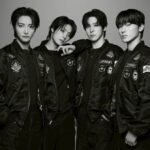Doosan Enerbility employees inspect a gas turbine at its manufacturing plant
Doosan Enerbility Co., a leading power plant engineering company in South Korea, has defied doubters about its gas turbines, the first of its kind produced at home, proving its performance and safety at a local power plant.
Its gas turbine has been in operation at the Gimpo Combined Heat and Power Plant, run by Korea Western Power Co. (KOWEPO), since the end of July last year.
It became the first power plant to use the domestically produced gas turbine, when other power facilities hesitated to adopt the unverified machine.
Dispelling concerns about its quality, the turbine has been running well without a glitch for almost one year, helping the power plant to delivers power to 380,000 nearby households.
“We’d expected a few glitches at the machine, the first domestically produced gas turbine we used,” Eom Kyung-il, vice president of KOWEPO told reporters touring the plant. “It has now proved its performance and safety.”
KOWEPO, a unit of Korea Electric Power Corp., is set to complete its verification of the gas turbine after 8,000 hours of operation at the end of next month.
Doosan’s hydrogen gas turbine prototype
A gas turbine is a key machine of power plants, working like an automobile engine. Doosan’s gas turbine, dubbed S1, boasts performance comparable to those of foreign companies despite its lower price.
KOWEPO will purchase another gas turbines from Doosan Enerbility for the Gimpo Combined Heat and Power Plant, west of Seoul, in March, 2025. The plant was built with an investment of 750 billion won ($562 million)
The turbines, dubbed S1U, to be installed at the plant will feature 35.7% higher power output than the existing S1. An S1U gas turbine sells for 130 billion won.
KOWEPO’s new plant under construction in Yeosu, South Jeolla Province, will use Doosan’s S2 gas turbines that also produce electricity from hydrogen, up to 50% of its power output.
Doosan’s offshore wind turbines off Jeju Island (Courtesy of Doosan Enerbility)
On Tuesday, the gas turbine’s dashboard at the Gimpo Power Plant central control room showed 200 megawatts (MW), about 70% of its maximum output of 300 MW.
That compared with the average output of 50% of gas turbines used at other power plants across the country.
South Korea’s power generators have purchased a total of 165 units of gas turbines from the world’s top three gas turbine makers — GE Vernova of the US, Germany’s Siemens Energy and Japan’s Mitsubish Heavy Industries — for a combined 8 trillion won. They have spent an additional 4 trillion won on their maintenance and repairs.
“It generally takes one to two months to replace and repair their components,” said Eom. “But Doosan, based in Korea, can offer repair services shortly after our request and charges 20 to 30% less than foreign companies.”
KOWEPO annually pays 21.4 billion won to foreign gas turbine makers for components replacement and repairs.
Doosan Enerbility is gearing up for its foray into not only the 12-trillion-won domestic gas turbine market, but also into overseas markets as well.
It has recently inked supply deals with domestic power companies, including a 580-billion-won contract it signed with Korea Midland Power Co. in July.
“Our energy efficiency, including output, is still lower than that of the Big Three, but we’re catching up quickly,” said a Doosan Enerbility official.
“As gas turbines are in short supply worldwide, we expect the demand for our products will increase,” he added.
By Hyung-Kyu Kim
khk@hankyung.com
Yeonhee Kim edited this article















